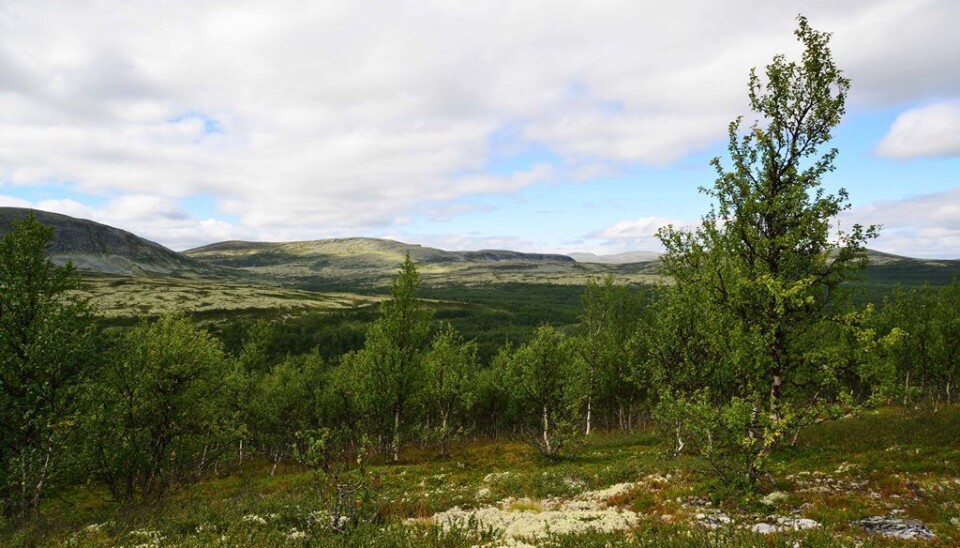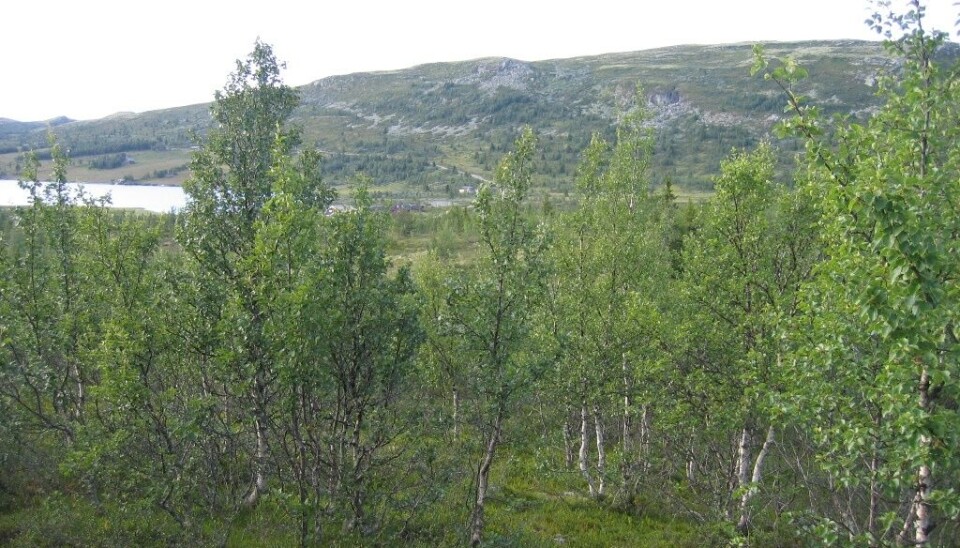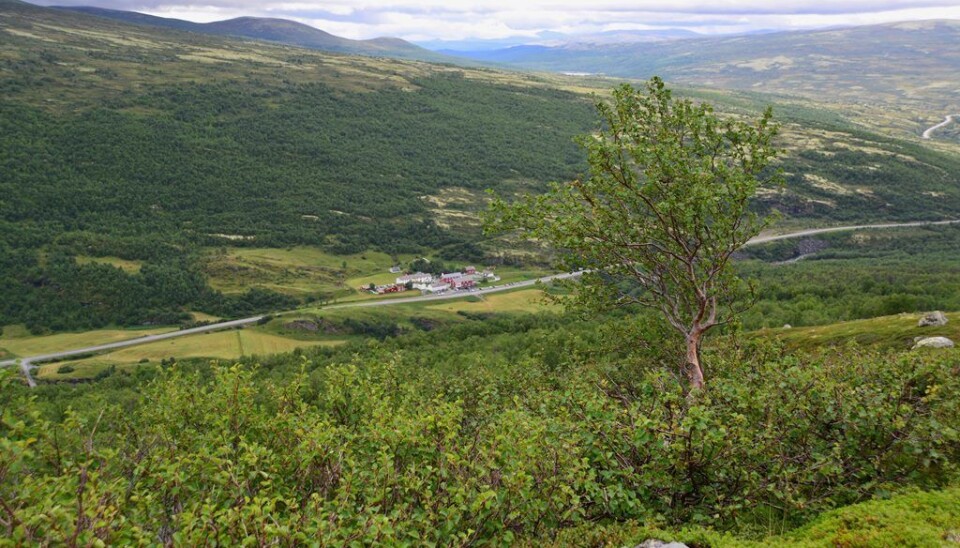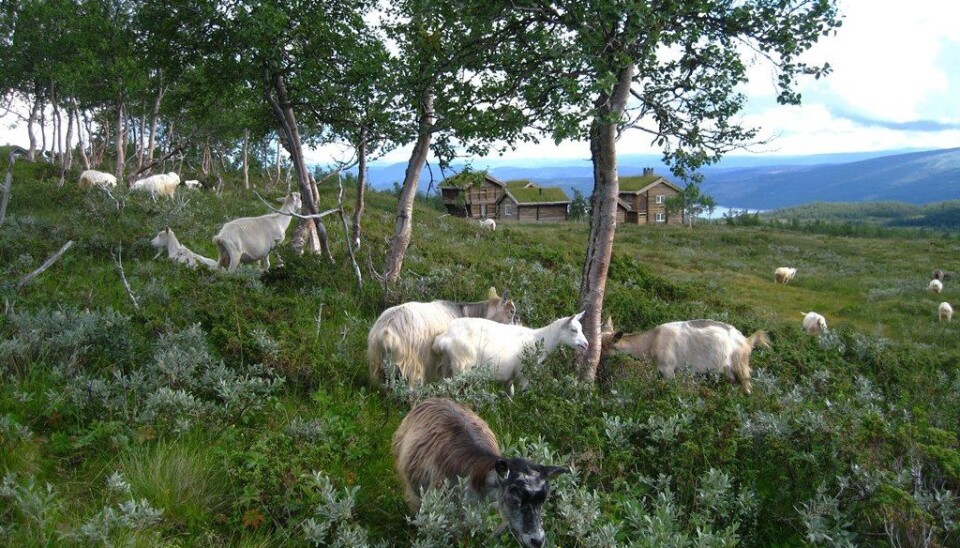An article from NIVA - Norwegian Institute for Water Research
Expanding mountain forest promotes climate warming
Birch forest is currently expanding in mountain regions because of climate warming and reduced grazing pressure. A recent study shows that increased mountain forest promotes climate warming.
Denne artikkelen er over ti år gammel og kan inneholde utdatert informasjon.
Tourists and locals have noticed that forests are creeping up hillsides in mountain regions in Norway. Beautiful views are lost behind trees, and previously open meadows are now invaded by birch and bushes.
Some may have considered that even though these changes in the landscape may not be positive, at least it is a comfort that the increasing carbon stock in the vegetation lowers the CO2 concentration in the atmosphere and thereby counteracts climate warming.
"Unfortunately, that is not true," says Heleen de Wit, scientist at the Norwegian Institute for Water Research (NIVA). –Expanding mountain forest will actually promote climate warming.
This conclusion builds on a recent study where Norwegian scientists have assessed climate change feedbacks of higher forest limits. Heleen de Wit led the project which was a cooperation between Cicero, Skog og Landskap, NINA og NIVA.
Counteracting climate feedbacks
Expanding mountain forests has two important counteracting climate feedbacks.
The first is a potentially cooling feedback by absorbing atmospheric CO2 in biomass.
The second is potentially warming, by reducing reflection of sunlight. When treeless areas are invaded with bushes and trees, they become darker, especially in winter when the soil is covered in snow.
"The effect of change in surface reflectance on heating is something everyone has experienced," says Heleen de Wit.
The warming effect dominates the cooling effect
"We compared the cooling effect of carbon uptake in biomass with the warming effect of changing albedo, for an expanding mountain forest in Norway. Warming won over cooling," says the researcher.
Forest plantations are considered as a climate-mitigation measure, says De Wit, but often only their effect on carbon uptake is considered. It is clear that changes in surface reflectance must also be taken into account for policies that use forests as a means to combat climate change.
The warming effect is stronger than found earlier
The warming effect of expanding mountain forest is considerably stronger than found earlier for northern forests. Earlier studies focused on high-density forest of high productivity, while this study includes open forest with a lower capacity to sequester carbon.
Additionally, mountain forest experiences a longer season with snowcover than forests at lower elevation, and the warming effect of changing albedo is particularly strong when snow covers the ground.
Expanding forest has a global impact on climate change
"Higher forest limits and expansion of mountain forest in the northern hemisphere contributes to a warmer climate,"says Heleen de Wit.
This phenomenon has not been included in global climate models. In large areas in the worlds, such as northern Europe, north-western Russia, Siberia and Canada, forests are currently expanding.
"Thus, there may be an impact on global climate," says the researcher.
The case study was mountain birch in Southern Norway
Changes in forest limits in Dovrefjell and Rondane, two neighbouring mountain ranges in Norway, were studied. Here, birch forest is currently found at higher elevation than earlier. The scientists modeled the development of birch forest under climate warming and without grazing pressure. Carbon storage in trees was calculated and changes in albedo.
The results were that the forest limit was expected to increase with over 100 m in 100 year. Birch forest cover would increase from 12 percent to 27 percent in the study area, with an associated increase of carbon storage with 59 percent while albedo was reduced from 46 percent to 30 percent.
The changes were converted to comparable units, and here it turned out that the albedo-effect was 10 to 17 times stronger than the cooling effect of carbon uptake.






































